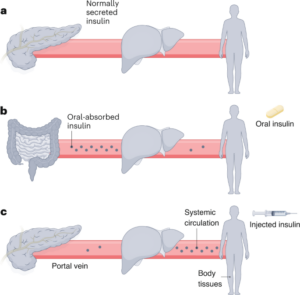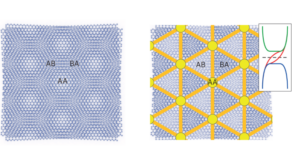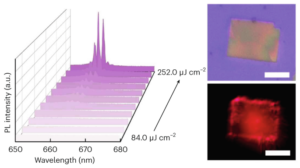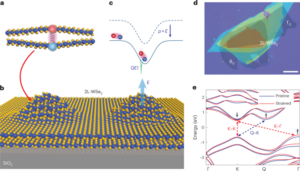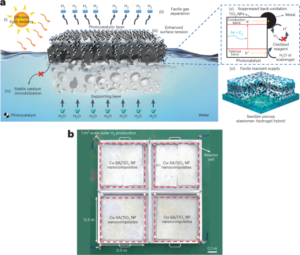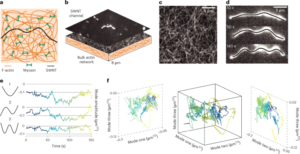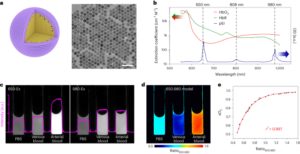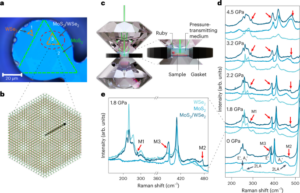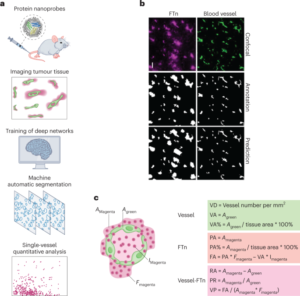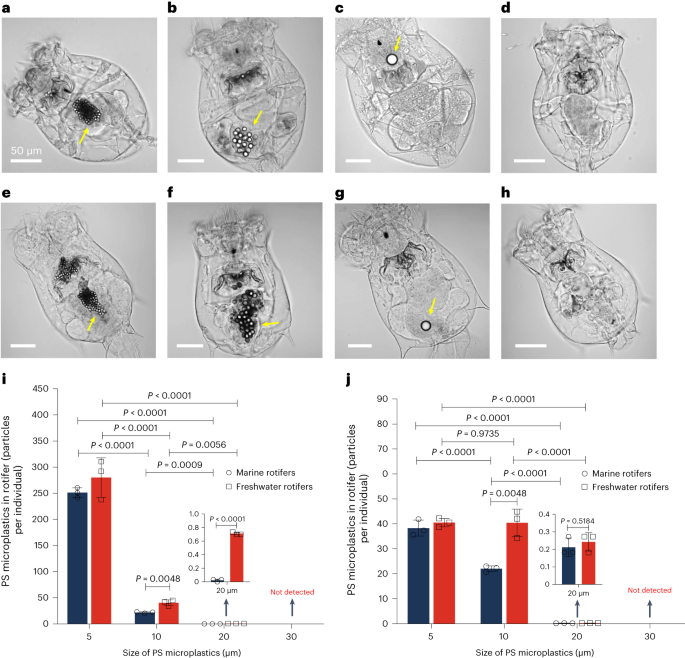
Stubbins, A., Law, K. L., Muñoz, S. E., Bianchi, T. S. & Zhu, L. Plastics in the earth system. Science 373, 51–55 (2021).
Ross, P. S. et al. Pervasive distribution of polyester fibres in the Arctic Ocean is driven by Atlantic inputs. Nat. Commun. 12, 106 (2021).
Aves, A. R. et al. First evidence of microplastics in Antarctic snow. Cryosphere 16, 2127–2145 (2022).
Woodward, J., Li, J., Rothwell, J. & Hurley, R. Acute riverine microplastic contamination due to avoidable releases of untreated wastewater. Nat. Sustain. 4, 793–802 (2021).
Peng, X. et al. Microplastics contaminate the deepest part of the world’s ocean. Geochem. Perspect. Lett. 9, 1–5 (2018).
Santos, R. G., Machovsky-Capuska, G. E. & Andrades, R. Plastic ingestion as an evolutionary trap: toward a holistic understanding. Science 373, 56–60 (2021).
MacLeod, M., Arp, H. P. H., Tekman, M. B. & Jahnke, A. The global threat from plastic pollution. Science 373, 61–65 (2021).
Gigault, J. et al. Nanoplastics are neither microplastics nor engineered nanoparticles. Nat. Nanotechnol. 16, 501–507 (2021).
Vethaak, A. D. & Legler, J. Microplastics and human health. Science 371, 672–674 (2021).
Wagner, S. & Reemtsma, T. Things we know and don’t know about nanoplastic in the environment. Nat. Nanotechnol. 14, 300–301 (2019).
Gerritse, J., Leslie, H. A., Caroline, A., Devriese, L. I. & Vethaak, A. D. Fragmentation of plastic objects in a laboratory seawater microcosm. Sci. Rep. 10, 10945 (2020).
Dawson, A. L. et al. Turning microplastics into nanoplastics through digestive fragmentation by Antarctic krill. Nat. Commun. 9, 1001 (2018).
Wang, C., Zhao, J. & Xing, B. Environmental source, fate, and toxicity of microplastics. J. Hazard. Mater. 407, 124357 (2021).
Hewitt, D. P. & George, D. G. The population dynamics of Keratella cochlearis in a hypereutrophic tarn and the possible impact of predation by young roach. Hydrobiologia 147, 221–227 (1987).
Jeong, C. B. et al. Microplastic size-dependent toxicity, oxidative stress induction, and p-JNK and p-p38 activation in the monogonont rotifer (Brachionus koreanus). Environ. Sci. Technol. 50, 8849–8857 (2016).
Baer, A., Langdon, C., Mills, S., Schulz, C. & Hamre, K. Particle size preference, gut filling and evacuation rates of the rotifer Brachionus “Cayman” using polystyrene latex beads. Aquaculture 282, 75–82 (2008).
Stelzer, C. P., Riss, S. & Stadler, P. Genome size evolution at the speciation level: the cryptic species complex Brachionus plicatilis (Rotifera). BMC Evol. Biol. 11, 90 (2011).
Papakostas, S. et al. Integrative taxonomy recognizes evolutionary units despite widespread mitonuclear discordance: evidence from a rotifer cryptic species complex. Syst. Biol. 65, 508–524 (2016).
Gilbert, J. J. & Walsh, E. J. Brachionus calyciflorus is a species complex: mating behavior and genetic differentiation among four geographically isolated strains. Hydrobiologia 546, 257–265 (2005).
Drago, C. & Weithoff, G. Variable fitness response of two rotifer species exposed to microplastics particles: the role of food quantity and quality. Toxics 9, 305 (2021).
Fournier, S. B. et al. Nanopolystyrene translocation and fetal deposition after acute lung exposure during late-stage pregnancy. Part. Fibre Toxicol. 17, 55 (2020).
Kleinow, W. & Wratil, H. On the structure and function of the mastax of Brachionus plicatilis (Rotifera), a scanning electron microscope analysis. Zoomorphology 116, 169–177 (1996).
Klusemann, J., Kleinow, W. & Peters, W. The hard parts (trophi) of the rotifer mastax do contain chitin: evidence from studies on Brachionus plicatilis. Histochemistry 94, 277–283 (1990).
Cornillac, A., Wurdak, E. & Clément, P. Biology of Rotifers (Springer, 1983).
Garvey, C. J. et al. Molecular-scale understanding of the embrittlement in polyethylene ocean debris. Environ. Sci. Technol. 54, 11173–11181 (2020).
Liu, Z. et al. Quantifying the dynamics of polystyrene microplastics UV-aging process. Environ. Sci. Technol. Lett. 9, 50–56 (2022).
Huang, Z. et al. Influence of protein configuration on aggregation kinetics of nanoplastics in aquatic environment. Water Res. 219, 118522 (2022).
Iyer, N. & Rao, T. Responses of the predatory rotifer Asplanchna intermedia to prey species differing in vulnerability: laboratory and field studies. Freshw. Biol. 36, 521–533 (1996).
Yuan, W., Liu, X., Wang, W., Di, M. & Wang, J. Microplastic abundance, distribution and composition in water, sediments, and wild fish from Poyang Lake, China. Ecotoxicol. Environ. Saf. 170, 180–187 (2019).
Wang, J., Wu, J., Yu, Y., Wang, T. & Gong, C. The specific list, quantitative distribution and change of zooplankton in the season of spring and autumn in Poyang Lake. J. Lake Sci. 15, 345–352 (2003).
Gilbert, J. J. Food niches of planktonic rotifers: diversification and implications. Limnol. Oceanogr. 67, 2218–2251 (2022).
Han, M. et al. Distribution of microplastics in surface water of the lower Yellow River near estuary. Sci. Total Environ. 707, 135601 (2020).
Fan, Y. et al. Spatiotemporal dynamics of microplastics in an urban river network area. Water Res. 212, 118116 (2022).
Janakiraman, A., Naveed, M. S. & Altaff, K. Impact of domestic sewage pollution on rotifer abundance in Adyar estuary. Int. J. Environ. Sci. 3, 689–696 (2012).
Cai, H., Chen, M., Du, F., Matthews, S. & Shi, H. Separation and enrichment of nanoplastics in environmental water samples via ultracentrifugation. Water Res. 203, 117509 (2021).
Nigamatzyanova, L. & Fakhrullin, R. Dark-field hyperspectral microscopy for label-free microplastics and nanoplastics detection and identification in vivo: a Caenorhabditis elegans study. Environ. Pollut. 271, 116337 (2021).
Stojicic, S., Zivkovic, S., Qian, W., Zhang, H. & Haapasalo, M. Tissue dissolution by sodium hypochlorite: effect of concentration, temperature, agitation, and surfactant. J. Endod. 36, 1558–1562 (2010).
Chopinet, L., Formosa, C., Rols, M. P., Duval, R. E. & Dague, E. Imaging living cells surface and quantifying its properties at high resolution using AFM in QI™ mode. Micron 48, 26–33 (2013).
de Vega, R. G. et al. Characterisation of microplastics and unicellular algae in seawater by targeting carbon via single particle and single cell ICP-MS. Anal. Chim. Acta 1174, 338737 (2021).
Podar, M. et al. Global prevalence and distribution of genes and microorganisms involved in mercury methylation. Sci. Adv. 1, e1500675 (2015).
- SEO Powered Content & PR Distribution. Get Amplified Today.
- PlatoData.Network Vertical Generative Ai. Empower Yourself. Access Here.
- PlatoAiStream. Web3 Intelligence. Knowledge Amplified. Access Here.
- PlatoESG. Carbon, CleanTech, Energy, Environment, Solar, Waste Management. Access Here.
- PlatoHealth. Biotech and Clinical Trials Intelligence. Access Here.
- Source: https://www.nature.com/articles/s41565-023-01534-9
- :is
- ][p
- 003
- 06
- 1
- 10
- 11
- 12
- 13
- 14
- 15%
- 16
- 17
- 19
- 1996
- 20
- 2005
- 2008
- 2010
- 2011
- 2012
- 2013
- 2015
- 2016
- 2018
- 2019
- 2020
- 2021
- 2022
- 22
- 23
- 24
- 25
- 26
- 27
- 28
- 29
- 30
- 31
- 32
- 33
- 35%
- 36
- 39
- 40
- 7
- 8
- 9
- 90
- a
- About
- abundance
- ACA
- Activation
- acute
- After
- aggregation
- AL
- among
- an
- analysis
- and
- arctic
- ARE
- AREA
- article
- AS
- At
- b
- behavior
- by
- carbon
- cell
- Cells
- change
- chen
- China
- click
- complex
- composition
- concentration
- Configuration
- contain
- contributes
- deepest
- Despite
- Detection
- differing
- distribution
- diversification
- do
- Domestic
- Dont
- driven
- due
- during
- dynamics
- e
- E&T
- earth
- Ecosystems
- effect
- engineered
- Environment
- environmental
- Ether (ETH)
- evidence
- evolution
- exposed
- Exposure
- fate
- field
- filling
- First
- Fish
- fitness
- food
- For
- four
- fragmentation
- from
- function
- genetic
- genome
- geographically
- George
- Global
- Hard
- Health
- High
- holistic
- http
- HTTPS
- human
- i
- Identification
- Imaging
- Impact
- implications
- in
- induction
- influence
- inputs
- into
- involved
- isolated
- ITS
- Know
- laboratory
- lake
- Law
- Level
- li
- LINK
- List
- living
- lower
- Mercury
- micron
- Microscope
- Microscopy
- Mode
- nanotechnology
- Nature
- Near
- Neither
- network
- nor
- objects
- ocean
- of
- on
- oxidative
- part
- particle
- parts
- plastic
- plastics
- plato
- Plato Data Intelligence
- PlatoData
- Pollution
- population
- possible
- predatory
- Pregnancy
- prevalence
- prey
- process
- properties
- Protein
- quality
- quantitative
- quantity
- R
- Rates
- recognizes
- reference
- Releases
- Resolution
- response
- responses
- River
- Role
- s
- scanning
- Scholar
- SCI
- Season
- single
- Size
- snow
- sodium
- Source
- specific
- spring
- Strains
- stress
- structure
- studies
- Study
- Surface
- system
- T
- targeting
- taxonomy
- The
- things
- threat
- Through
- tissue
- to
- Total
- toward
- Turning
- two
- understanding
- units
- urban
- using
- variable
- via
- vivo
- vulnerability
- W
- wang
- Water
- we
- widespread
- Wild
- world’s
- wu
- X
- yellow
- young
- zephyrnet
- zhang
- Zhao

